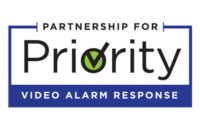Video Priority Response Has New Champions

A new organization is bringing security manufacturers, central stations and dealers together with law enforcement officials and insurance companies to reduce property losses resulting from burglaries and increase arrests that get criminals off the streets. The Partnership for Priority Video Alarm Response (PPVAR) counts with members such as Acadian Monitoring, United Central Control, Emergency24, Rapid Response Monitoring, Stanley Convergent Security Solutions, Protection 1, I-View Now and RSI Videofied on the security industry side, as well as chiefs of police, sheriffs and insurance fraud investigators.
Keith Jentoft, president of Videofied and founder of the PPVAR, told SDM that “The main reason for [creating this group] it is there is no voice from a separate organization that brings all these stakeholders together — law enforcement, insurers, alarm companies.”
“The initiative requires the collaboration of the key stakeholders,” said Frederick Lohmann, director of field operations for the Southwest Region of the National Insurance Crime Bureau (NICB). “It is in the best interest of insurers and their policy holders to work with law enforcement agencies and the alarm industry to identify new technologies and best practices that will increase efficiency in dealing with traditional law enforcement activities. Declining budgets and personnel require law enforcement agencies to work with the stakeholder industries towards the goal of reducing property crime and its impact in our communities.”
Budget cuts to police departments were made across the board in response to the lingering economic crisis, leaving many departments understaffed and unable to respond to all alarm calls in a timely fashion, if at all. In recent cases such as the cities of Detroit and San Jose, Calif., the policies adopted did not give priority to verified alarms — whether through video or confirmation from a present party — but they refused to respond to anything else.
Priority response policies seek to take a more moderate stance by providing response to all alarms, but creating a triage-like process to determine at-risk situations.
Lt. John Gannon from the Los Angeles County Sheriff's Department (LASD), a member of the PPVAR, said that from a law enforcement perspective, education is key in order to make a priority response policy beneficial for all involved. “There are tremendous advantages to video verification to subscriber, the [security] industry, and law enforcement,” Gannon said. “By getting the word out among the alarm subscriber community that video verified alarms are treated as a priority response by the police/sheriff’s departments, it should not only generate interest among subscribers to add that feature, but also it should exponentially help reduce false alarm responses and increase likelihood of arrests for offenders — both beneficial outcomes to law enforcement agencies who adopt policies for special handling of video verified alarms.”
Jentoft clarified, “It’s not a false alarm reduction issue. This is about combating property crime with arrests and reducing property losses.”
Gannon hopes to help other police agencies who want to adopt a priority response policy by providing best practices and sharing the experiences of his own department as well as working to standardize a solution. He commented, “The LASD is committed to assisting in this venture by providing input to aide in development of standards, implementation strategies and help with marketing the benefits of video verification from a large law enforcement agency perspective.” Gannon noted that the LASD is the largest sheriff’s department in the world and within the top three largest police agencies in the United States.
Steve Walker, newly appointed board member for the PPVAR, noted that input from law enforcement and insurers as well as from the security industry will help ensure the practices are accepted and applied successfully. “The goal of this partnership is to work together with law enforcement, security service providers, and insurance underwriters to leverage video intrusion alarm technology for the purpose of increasing arrests and reducing losses,” Walker said. “We expect to develop best practices for an end-to-end solution that best meets the goals of these stakeholders. Through a process of review and candid discussion, we intend to optimize procedures for system installations, monitoring, PSAP dispatch, and law enforcement response. This means that best practices are not limited to alarm companies; they involve all the participants in response, including PSAPs and the responding officers… Building strong relationships across these groups will help us to achieve critical ‘buy in’ as standards are developed, adopted and implemented.”
As far as why video verification as a particular solution is receiving endorsement from law enforcement, Gannon stated, “Underwriters and insurers want to minimize losses. Enhanced Call Verification (ECV) procedures helped reduce the number of false alarms experienced, but many underwriters, subscribers and law enforcement agencies lost faith in traditional burglar alarms as an effective deterrent to crimes. Is it better that nothing? Yes. But, the overwhelming number of alarm activations each year simply doesn’t add up to enough criminals landing in jail. That’s really the best crime deterrent possible. Lock up the (often habitual) criminal offenders and the number of alarm activations should expectedly drop when the suspects are behind bars and not out capering.”
Gannon also explained why arrests are a more effective outcome than deterrence as far as reducing crime rates, “One repeat offender who needs to steal consistently to support a major drug addiction can be good for many, many crimes across a region. Traditional alarm systems only deter some offenders. Proactive policing to arrest loiterers and drug offenders found wandering around late at night where we believe they are out looking for targets of opportunity are most likely to result in only short term incarceration due to drug diversion sentencing guidelines in many jurisdictions. Those arrests are good deterrents to property crimes for the night, but not to the extent that locking them up longer term can benefit all stakeholders, [such as] the community, underwriters, law enforcement, security companies, etc.”
“Priority response is one approach that delivers arrests of career offenders, thereby reducing claims and property losses,” said Lohmann. “[Our goal is to] improve the efficiency of law enforcement and alarm companies with this new technology that will have a positive impact on reducing property crimes, claim losses, and the financial impact to the consumer-citizen.”
Gannon believes the bottom line is that when law enforcement can verify a crime in progress, it has a better chance to make arrests at the scene — which helps keep criminals in jail longer — and lower losses incurred by alarm owners and insurers.
Lohmann said, “The NICB sees obvious value to our member insurers with implementation of a priority response from law enforcement for verified in-progress burglary thefts. Increased arrests of career offenders that commit multiple offenses, coupled with the potential deterrent impact should reduce claims and property losses for our insurers and their policy holders who ultimately foot the bill for the cost of crime.”
Jentoft added that for insurance companies, it’s not just the claim payout that’s costly, it’s the overhead of claims processing as well. “The insurers really care about arrests,” Jentoft said. “Law enforcement does too, but for insurance it’s a macro.”
The LASD implemented its verification policy mid-year in 2011. According to the agency’s data, video verified alarms in 2011 had a call-to-arrest ratio of 19 percent, while that ratio ranged between .1 and .6 percent for silent robbery alarms, audible burglar alarms, silent burglar alarms and panic alarms individually. Gannon stressed that the dramatic difference between the low arrest numbers linked to traditional alarms and the much higher numbers the department achieved through video verified alarms are what this education initiative is all about.
The PPVAR will establish “stakeholder committees that will collaborate both by phone and face-to-face meetings in conjunction with normally attended trade shows,” Walker said. These working groups will consist of a Law Enforcement Committee, meeting at the IACP annual conference in October; an Alarm Company Committee, meeting at the ESX show in June; an Insurance Committee, meeting at the NICB conference in June; and an End User Committee, meeting at the ASIS show in September.
“Each committee will document best practices from their own perspective and will present their findings to the board for final approval before submitting them to the CSAA — who will draft the official standard,” Walker explained.
Lohmann commented that the NICB occupies a niche role as the primary interface between insurers and law enforcement. “The NICB will be offering our subject matter expertise on reducing claims and property losses that impact the insurance industry,” he said.
Walker added that he will be very involved in the Alarm Industry Committee and will help oversee our upcoming meeting in June at ESX. “Stanley has extensive experience in the monitoring of verified alarms and I look forward to exchanging best practices with other leaders in our industry as we seek better solutions in both process and procedure,” Walker said.
Members of the Partnership for Priority Video Alarm Response will hold the organization’s first informational meeting at ESX on Tuesday, June 26 in room 202 at the Nashville Convention Center from 8:00 AM to 10:00 AM. Interested parties are welcome to attend and learn what the PPVAR is working on and how they can participate.
Looking for a reprint of this article?
From high-res PDFs to custom plaques, order your copy today!




